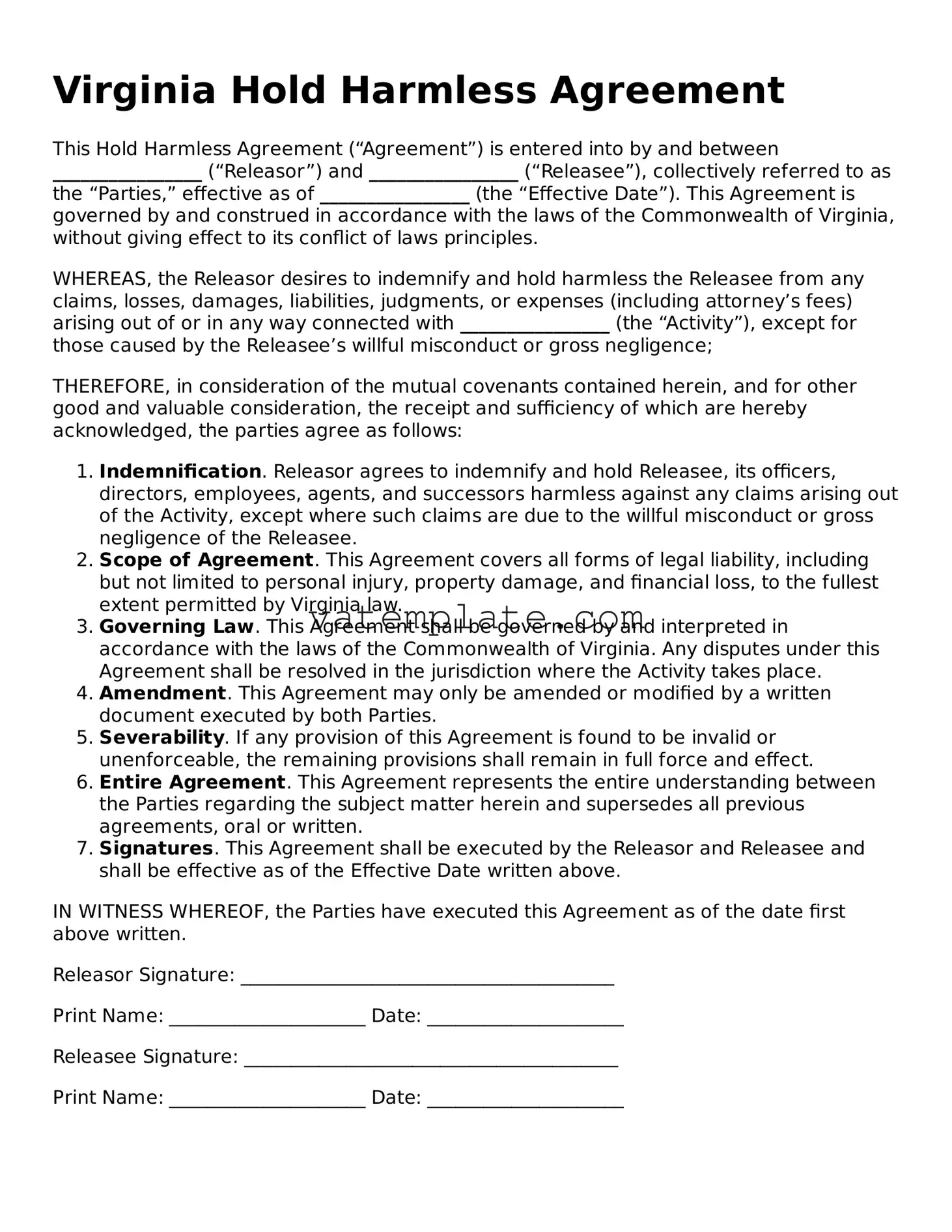Virginia Hold Harmless Agreement
This Hold Harmless Agreement (“Agreement”) is entered into by and between ________________ (“Releasor”) and ________________ (“Releasee”), collectively referred to as the “Parties,” effective as of ________________ (the “Effective Date”). This Agreement is governed by and construed in accordance with the laws of the Commonwealth of Virginia, without giving effect to its conflict of laws principles.
WHEREAS, the Releasor desires to indemnify and hold harmless the Releasee from any claims, losses, damages, liabilities, judgments, or expenses (including attorney’s fees) arising out of or in any way connected with ________________ (the “Activity”), except for those caused by the Releasee’s willful misconduct or gross negligence;
THEREFORE, in consideration of the mutual covenants contained herein, and for other good and valuable consideration, the receipt and sufficiency of which are hereby acknowledged, the parties agree as follows:
- Indemnification. Releasor agrees to indemnify and hold Releasee, its officers, directors, employees, agents, and successors harmless against any claims arising out of the Activity, except where such claims are due to the willful misconduct or gross negligence of the Releasee.
- Scope of Agreement. This Agreement covers all forms of legal liability, including but not limited to personal injury, property damage, and financial loss, to the fullest extent permitted by Virginia law.
- Governing Law. This Agreement shall be governed by and interpreted in accordance with the laws of the Commonwealth of Virginia. Any disputes under this Agreement shall be resolved in the jurisdiction where the Activity takes place.
- Amendment. This Agreement may only be amended or modified by a written document executed by both Parties.
- Severability. If any provision of this Agreement is found to be invalid or unenforceable, the remaining provisions shall remain in full force and effect.
- Entire Agreement. This Agreement represents the entire understanding between the Parties regarding the subject matter herein and supersedes all previous agreements, oral or written.
- Signatures. This Agreement shall be executed by the Releasor and Releasee and shall be effective as of the Effective Date written above.
IN WITNESS WHEREOF, the Parties have executed this Agreement as of the date first above written.
Releasor Signature: ________________________________________
Print Name: _____________________ Date: _____________________
Releasee Signature: ________________________________________
Print Name: _____________________ Date: _____________________
